

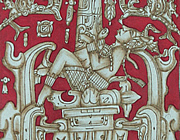
Palenque is a beautiful site set on high ground surrounded by jungle. Pyramids hide the tombs of the Red Queen and the great Lord Pakal and the extensive palace has a unique four-storey tower, dark subterranean tunnels and a magnificent ceremonial court with carvings of captives of war.
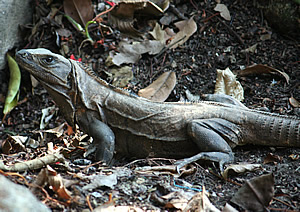
To visit the famous ruins at Palenque we stayed outside the town - the little of which we saw made this a good decision!
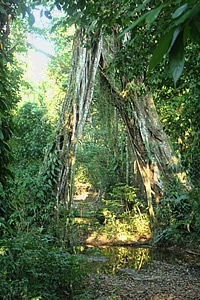
The Chan Kah is a resort hotel, not normally our style, but it was out of season and practically empty and we had an enormous suite with two air conditioners and ceiling fans - bliss! The staff were fantastic: friendly, smiling and efficient. The chamber maids make a big thing out of decorating the rooms with flower petals - a different design each day - which is sweet.
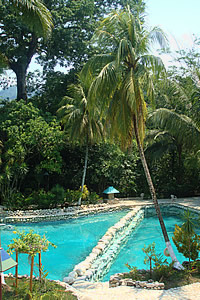

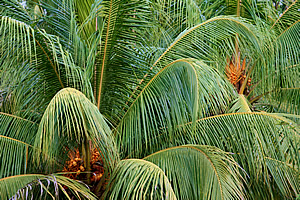
The hotel is set in jungle - quite dense jungle - and populated with iguanas and lots of bird life. On a night of a full moon we saw two owls in the trees and at the ruins beautiful toucans in flight.
Our guide arrived early to take us to see the site so that we could be there when it opened. As we spent four hours exploring this was a very good move indeed - it became extremely hot and humid as the morning wore on.
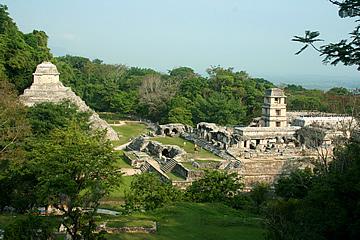
Mesoamerican civilisation is divided into pre-Classic, upto about AD 300, Classic, up to AD 800-900 and post-Classic from then to the Spanish conquest in the sixteenth century. Palenque was at its peak around AD 600-800 when its principal rulers were K'inich Janaab Pakal (Shield of the Sun) and his son Kinich Kan B'alam II (Serpent Jaguar). Most of the monumental buildings to be seen at Palenque were constructed during their time and are in a variation of the Peten style of the Campeche region and northern Guatemala. Along with so many of the Mayan cities, Palenque declined throughout the post-Classic era and was eventually abandoned to the jungle.
Palenque lies north of the equator but south of the Tropic of Cancer, thus north-facing facades are illuminated by the sun at this time of year. Rio Otolum runs through the site which is quite unusual - its ancient name was Lakamha meaning Big Water. This is a site originally over-running with water from over 50 springs and rivers emerging from the hills.

This small temple is the first to be seen on entering the site. It stands at the eastern end of a stepped terrace and gets its name from a skull decoration on the front wall flanking a doorway.
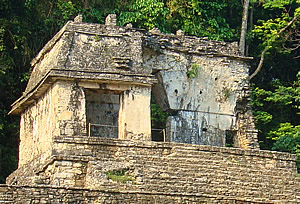

The temple is also known as the Temple of the Dead/Dying Moon.
The skull has very protuberant teeth and it is possible that it is meant to represent the skull of a rabbit. The Maya believed they could see a rabbit in the moon and the Mayan moon goddess was often depicted holding a rabbit - it all fits!
Inside the temple, at its base, were found a vault containing human bones and pieces of jade jewelry - buried only with the Mayan elite.1

East of the Temple of the Skull, on the same terracing, this temple gets its name from a skeleton found within which had red bones. The colouration was due to cinnabar, mercury ore, with which the remains had been covered. It isn't known, however, who she actually was, though she must have been very important as she was buried with rich jewelry and covered with a fine garment, a malachite mask concealing her face.1 She may have been the wife of K'inich Janaab Pakal.
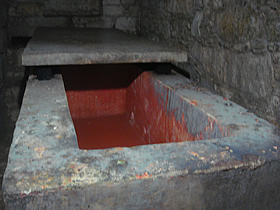
The tomb is reached by climbing twelve steps and entering a short tunnel which leads to a perpendicular corridor off which are three small rooms which once contained sarcophagi. The central room is where the Red Queen was found. Two companions, probably sacrifices, were buried alongside her in the adjacent small rooms: another woman and a child.
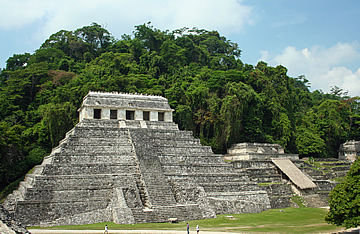
The final temple on this terrace, east of the Temple of the Red Queen, is the Temple of the Inscriptions. The temple has five entrances and once had a roof comb. It sits on an eight stepped pyramid rising 26 m from the floor of the plaza and towering over both the other temples on the platform.

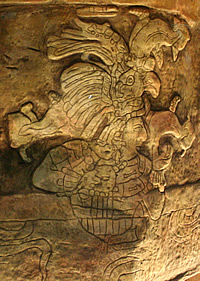

Unlike many other Mayan sites, in particular Quirigua in Guatemala, Palenque has no stelae. Instead the history of the city was inscribed on stone panels on the walls of monumental buildings. The temple derives its name from three such panels which detail the history from AD 501 to AD 692.1 Many sets of glyphs give dates associated with K'inich Janaab Pakal's predecessors and his own life from his birth in AD 603. Others predict events to happen in the future - as far as AD4772! One set describe how, 132 days after Pacal's death, his son, Kan Balam II, became ruler. It is the second longest hieroglyphic script known after the hieroglyphic staircase at Copan. Pakal's mother, the Lady Sak Kuk, ruled before him. Another female ruler was his great-great grandmother Lady Yohl Ikal. This is rather unusual and subsequent rulers went to great lengths to demonstrate their royal lineage.
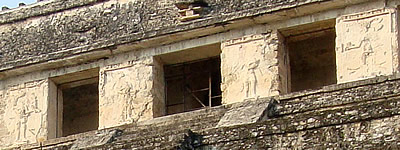
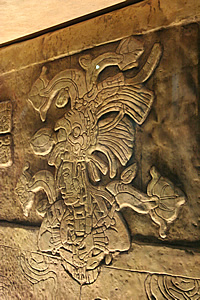
One of the most remarkable Mayan artifacts ever to have been found was discovered by Mexican archaeologist Alberto Ruiz Lhuillier deep within the pyramid: the tomb of the powerful ruler K'inich Janaab Pakal.
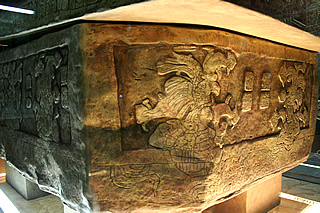
Lhuillier had noticed that one of the slabs in the temple floor had holes in each of its corners by which it could be lifted.2 Beneath he found a rubble-filled staircase leading down into the pyramid. It took the archaeologist four years of hard work to dig out the rubble on the staircase to reveal the tomb. He was rewarded with the most richly carved Mayan sarcophagus ever to have been found, hewn from a single block of limestone and covered with an immense stone slab.

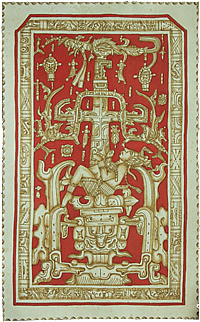
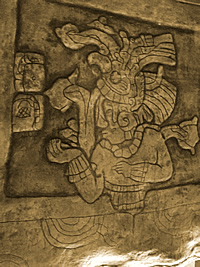
Lord Pakal reigned for 68 years and planned this funerary temple long before his death on August 28th AD 683 at the immense age of 80. Begun in AD 672 it took ten years to complete.1 The burial chamber, 7m by 3.75m and 7m high lies is a testament to the skills of the builders in supporting the huge mass of stone above the space. The stucco reliefs of nine warriors on the walls of the burial chamber stand guard over the sarcophagus.
As befits a king, Pakal was buried with a magnificent jade mask and jewelry, surrounded by hundreds of precious funerary objects made from jadeite, shell and obsidian.
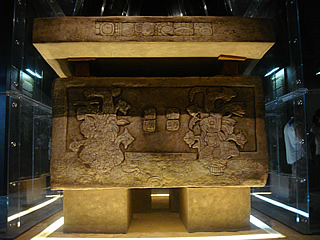
But the most amazing artifact was the sarcophagus itself, deeply carved with exotic mayan figures, and particularly the lid which depicts the king, personified as K'awiil, the patron god of agriculture, falling backwards into the jaws of the earth monster beginning his afterlife journey to the underworld.
The information board at the museum has a slightly different version: Pakal is being reborn, emerging from the jaws of Sak B'aak Naah Capaat, "First Centipede of the White Bones", which represented the depths of the underworld. He reaches the terrestrial level guided by the trunk of the sacred tree.

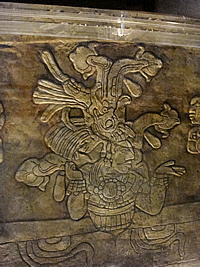
An exact replica of his tomb has been created in the site museum - it is no longer possible for ordinary mortals to visit the real tomb.
The interior of the sarcophagus, like that of the Red Queen, was covered with red cinnabar.


On the rim of the slab is a long glyphic inscription detailing the names and deaths of many rulers prior to Pakaal, including the death of his parents Lady Sak K'uk on September 9th AD 640 and Lord K'an Mo Hix on December 29th AD 642.
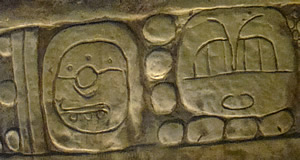

The Group of the Cross is three temples set around a small plaza east of the Temple of the Inscriptions and across the Rio Otolum: the Temple of the Cross, the Temple of the Foliated Cross and the Temple of the Sun. All three were constructed during the reign of Kan Balam II, Pakal's son and successor, and make reference to him on carved stone slabs. He ruled from 684 until his death in 702.
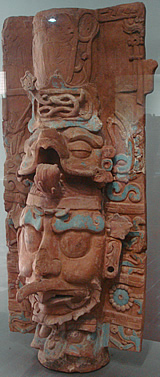
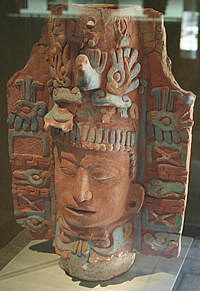
Each temple is associated with one of the fundamental creation levels of the Mayan world: the heavens, earth and underworld and their associated gods - the three patron gods of Palenque designate GI, GII and GIII are called the Palenque Triad. 1
Within the inner sanctuary of each temple are carved stone tablets depicting two figures: a tall one and a shorter one . The taller is generally agreed to be that of Kan Balam as an adult. The identity of the shorter figure is variously claimed to be either Kan Balam as a youngster, his father Pakal in the underworld or the "First Father"3,4. The Maya creation myth, chronicled in the Popul Vuh, begins with the maize deity or First Father, the father of the hero twins, and associated with the planet Jupiter.
The Group of the Cross was a centre of ceremonial life and many elaborate composite incense burners were found here. Incense burners were a very important part of religious ceremonies, used for about twenty years, after which they were buried in sacred places. The cylindrical clay body was decorated with masks of gods or the faces of revered ancestors. Conical vessels on top of the stands burned copal incense and human blood.

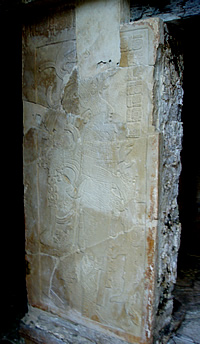
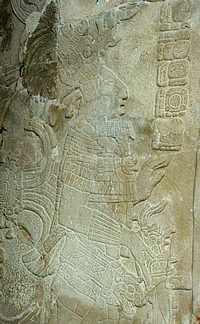
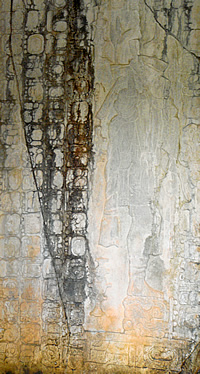
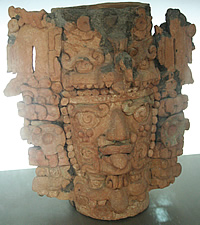
On the northern edge is the Temple of the Cross, associated with the realm of the heavens and the patron god GI. It faces a few degrees west of due south onto the plaza. It is set on a lovely stepped pyramid with its roof comb almost intact.
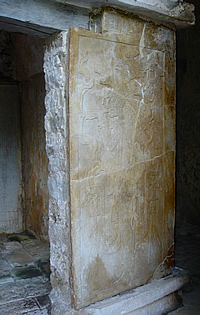
Inside the temple are carved stone tablets in good condition, two flanking the entrance to a sanctuary chamber depicting Kan Balam II on the left and God L on the right, an important god of the underworld.1
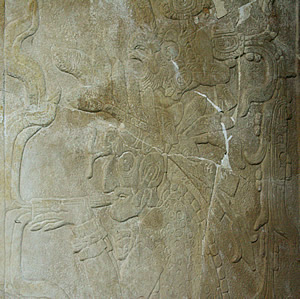
The inner sanctuary has a huge three part stone carving on its back wall depicting two figures: a tall one on the right, Kan Balam, and a shorter one on the left standing on some kind of platform and in a more submissive pose with lowered hands. The narrative glyphs on each side describe the birth of the gods of the Palenque Triad and the ancestral lineage of Kan Balam up to and including the ruler for whom Kan Balam was named.4
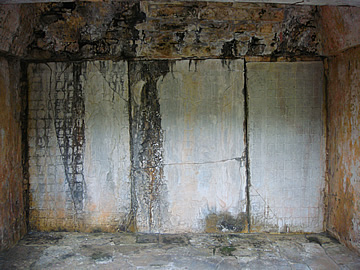
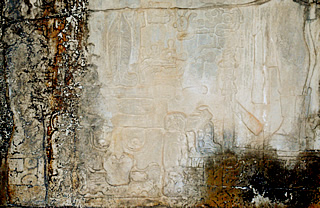
Between the two figures is a tree in the shape of a cross, the World Tree, connecting the three Mayan realms. The horizontal arm of the cross is the double-headed serpent bar of ruling power. A celestial bird, representing the heavens, is perched on top of the cross.
Difficult to make out, even harder to photograph, but vividly described by our guide.

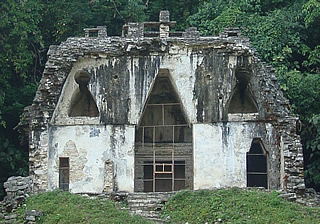
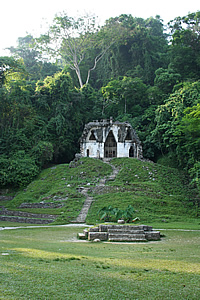
The panels within the sanctuary of the Temple of the Foliated Cross are very similar to that of the Temple of the Cross. Here, though, Kan Balam is portioned on the left, the north side of the temple. The temple was dedicated in AD 692.
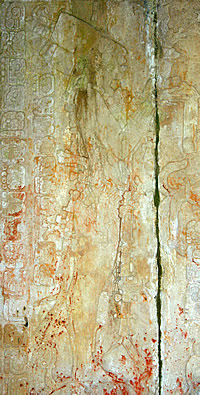
The cross representing the World Tree is more organic, the horizontal arm of the cross formed of young maize plants. This symbolism links the temple to the earthly domain of man, birth and food crops. The ruler was regarded as being responsible for ensuring the food supply and in this temple Cham Balam demonstrates his acceptance of this role.5 The jester god, held by Kan Balam,5 is associated with the patron god God I, though the patron god of this temple is GII.4
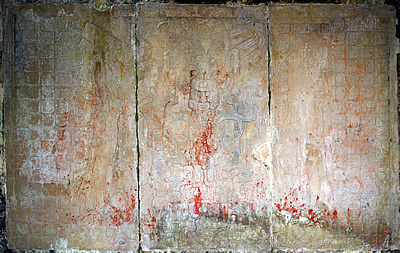

The smaller figure has lowered hands and a thick plait hanging down his back. In all three temples he appears to be well-wrapped up!
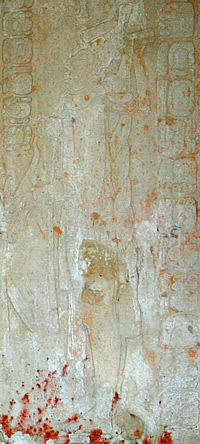
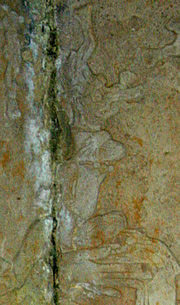
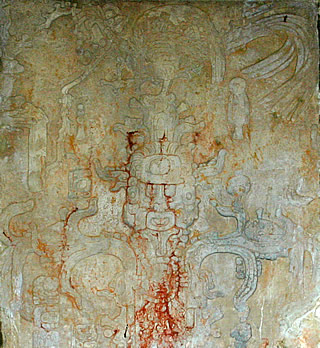

At the western edge of the plaza the Temple of the Sun stands on a small pyramid facing west. At the summer solstice the sun's rays shine through apertures illuminating a corner of the sanctuary. T-shaped openings in the outer walls symbolise Ik, god of the wind.

This temple is associated with the underworld, symbolised by the shield and spear of war and the Jaguar god of the underworld, GIII.4
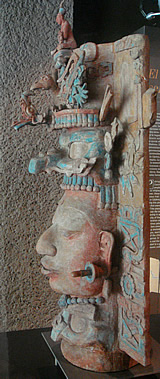
In this temple Kan Balam declares his willingness to wage war for his people and to perform the rituals for the dead.5
The temple has an almost intact roof comb and the remains of stuccoed figures on the pillars. The roof itself was once covered with high relief decoration, little of which remains.

Inside the sanctuary the three tablet panel again depicts Kan Balam, on the right or north side, facing a smaller figure, both are standing on crouched slave figures, probably war captives. Between them a shield and crossed spears. In this panel both figures hold up a small god: Kan Balam has God K, associated with GIII, and the smaller figure offers a flint/shield god, symbol of war - the shield is particularly gruesome as it is said to be a flayed face!
The iconography is complex and difficult to grasp without spending some time studying, but essentially the Group of the Cross served as an important ceremonial centre which, at every turn, reinforced the right and fitness of Kan Balam to rule
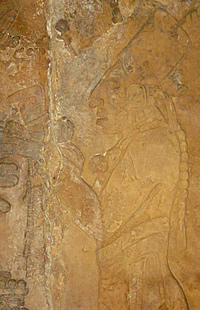
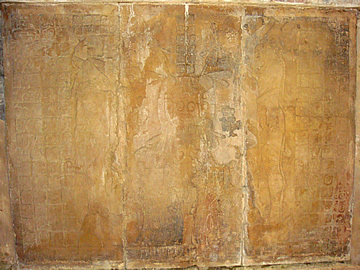
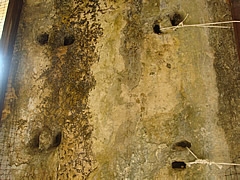
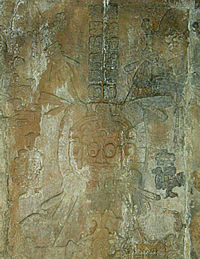
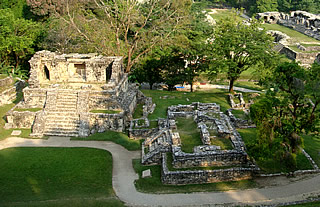
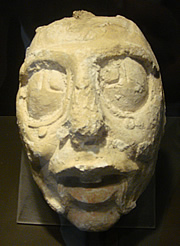
Next to the Temple of the Sun these two small temples are also considered to be part of the Group of the Cross. Temple XV was actually the first to be built and had funerary and ceremonial functions.1 Little remains now apart from foundations.
Temple XIV was built during the reign of Kan Hoy Chitam II (702 to 711), the younger brother of Kan Balam II, and was the final building in the group. This temple also has finely carved stone tablets on its sanctuary wall.
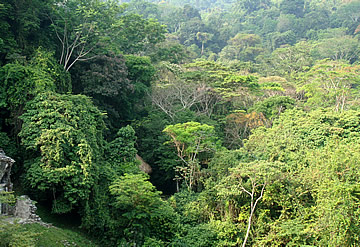
South of the Group of the Cross a densely overgrown area hides several more structures. The beautiful Tablet of the Warriors was discovered in Temple XVII and depicts Kan Balam II with a submissive warrior captive.
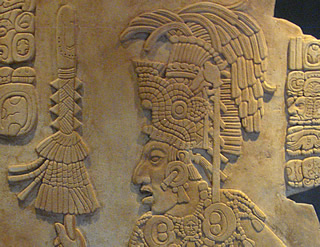
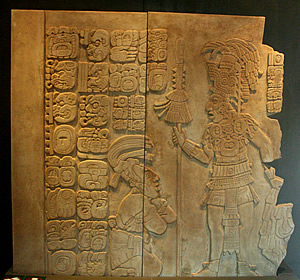
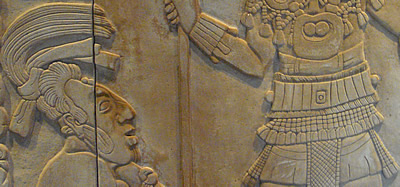
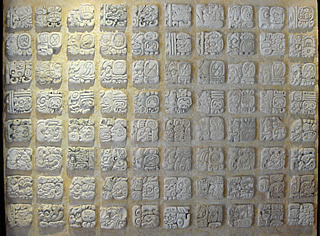
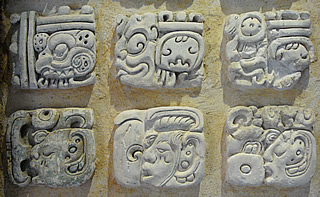
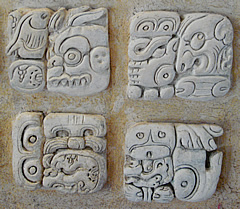
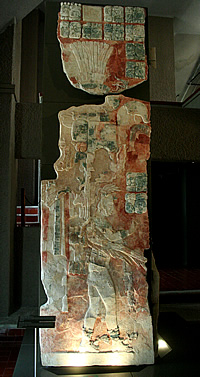
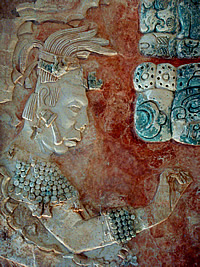
Temple XIX lies on the southern edge of this group and, like Temple XVII, was built during the reign of Akhal Mo Nab III, grandson of Pakal, who became ruler in AD 722. This temple was discovered in 1998 along with fragments of a beautifully carved stone bench showing the seated king flanked by regional lords, and a stucco tablet depicting his son and heir U Pakal Kinich. The stucco was in a thousand fragments and was painstakingly put back together. Where the fragments had lain face down in the dust, the colours were wonderfully preserved.
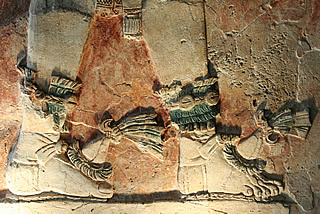
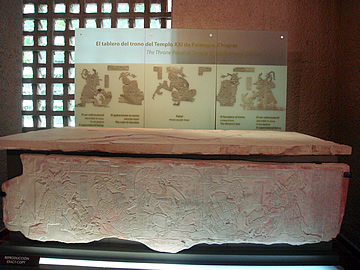
This group also includes Temple XXI which was constructed in AD 736, again by Ahkal Mo' Nahb' III . In 2002 a magnificent carved tablet was discovered here. It is said to be part of a throne and shows the great Lord Pakal with the incumbent ruler Ahkal Mo' Nahb' III, who constructed this temple too, on his right, and the heir apparent U Pakal Kinich. At each end of the 3m wide slab is a supernatural being in the shape of a jaguar.7
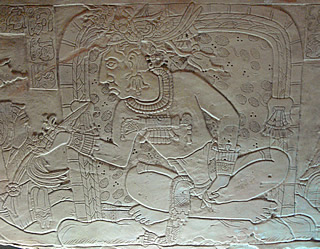
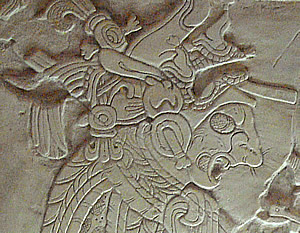
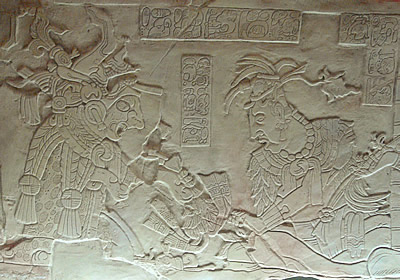
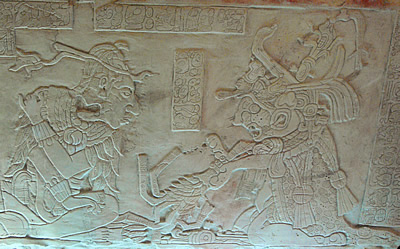
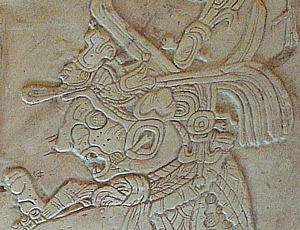
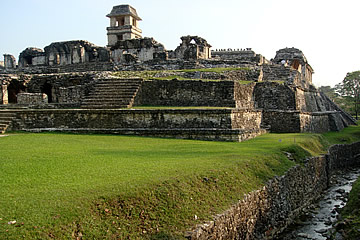
This impressive complex was built over several generations of rulers including Pakal in the seventh century AD. It occupies a platform roughly 100m by 75m and 10m high and is set around four large courtyards, a maze of underground tunnels, narrow rooms and corridors, galleries, latrines and saunas.
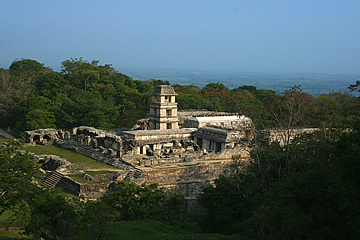
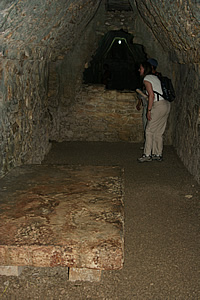

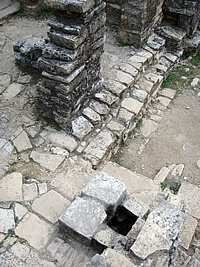
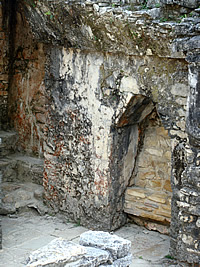
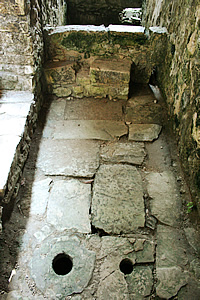

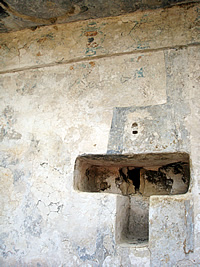
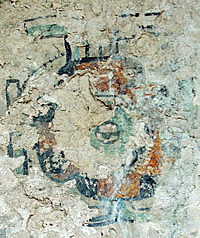
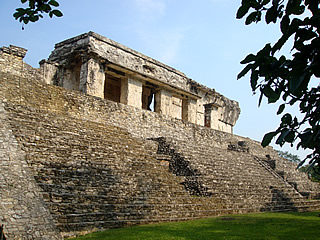
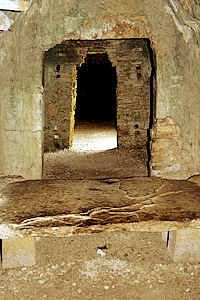
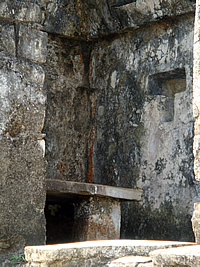
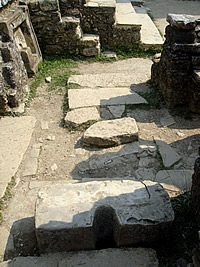
We crossed back over the Rio Otolum. On the east side of the we could see a gallery set on the platform with quite well-preserved stucco decoration on its pillars. It is high and narrow, typical of a passage with a corbel-arched roof. On its walls are the remains of ancestor cartouches, portraits of revered ancestors, though little of the actual portraits remains.8 This gallery stands in front of House A on the Principal Court which we were to see later.
We entered the palace on the south side and explored the very dark underground tunnels on the south side, narrow corbel-roofed spaces with one or two stone benches.
The palace was very much a place for ceremony and ritual but also the residence of the ruler and his family. Several stone benches were discovered in the tunnels. The most elaborate, called the Throne of the Subterraneans, is displayed in the site museum and is decorated with the Cosmic Monster. It was an important symbol of dynastic power where the eminent court nobles gathered to make administrative and political decisions. It is an evocative piece - it was dedicated in AD 652 by no less a person than the great Lord Pakal.
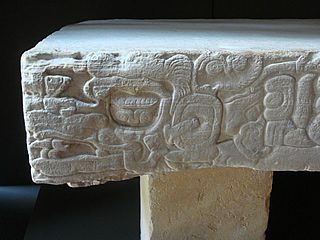
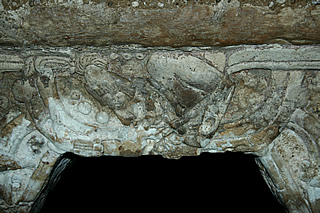
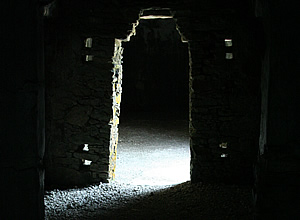
Off the south west courtyard is a bathing area with a steam bath and latrines. The palace had a reasonably sophisticated drainage system based on the aqueduct and flow of water from the Otolum.
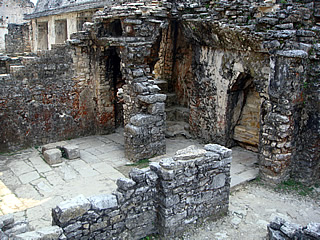
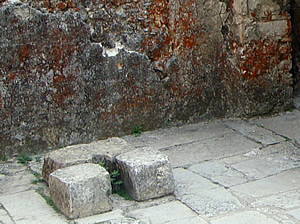
Vestiges of carved stonework and stucco figures serve as reminders that every building was once lavishly decorated. Here and there vestiges of red paint remain, the standard colour for Mayan buildings.
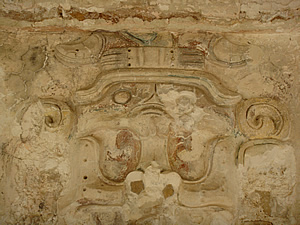
A steam room had two holes in the floor where it is thought steam was generated by pouring water on hot stones.9 Water could run through via a gutter along the back wall of the room.
This south west courtyard is also called the Court of the Tower. This is the only Mayan building we saw in the many sites we visited which had a tower! The top of the tower is level with Pakal's mortuary temple. At the winter solstice the sun, viewed from here, sets directly behind the Temple of the Inscriptions.
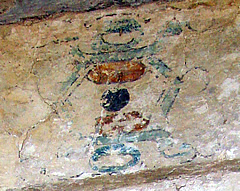
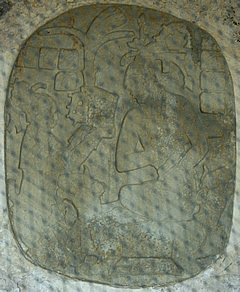

From the top of the four storey tower Mayan astronomers could watch the movements of the heavenly bodies and chart their courses.
East of the this court, in the centre of the complex, is the celebrated House E, built by Pakal's great-great grandmother Lady Yohl Ikal.8 It established the tradition of incorporating T-shaped apertures in the rooms - these are the symbol of Ik, the wind god. House E was the first structure to be built on the upper terrace of what would eventually become the palace complex.
Unlike every other building in the palace complex it was painted white. On the white walls are very unusual colourful depictions of stylised flowers and insects.
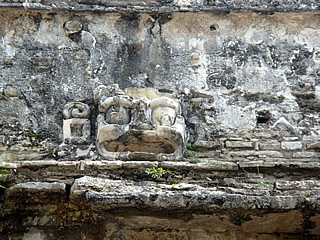
It has been identified as being some kind of council chamber, its proximity to the steam baths suggesting the south west court was used for vision rites and contacting ancestors.10
On an interior wall of House E the famous Oval Place Tablet depicts Pakal, seated on a double-headed jaguar throne, receiving the crown from his mother.
Nowadays it is protected by a wire mesh, still visible but hard to photograph.
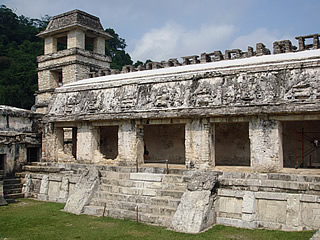
The Principal Court of the palace, in the north east corner, is one of the few places with a sufficient amount of sculpture remaining to give a good idea of how splendid the Mayan buildings must have been. Sculptures were generally not just decoration but designed to engender particular feelings in the onlookers such as awe, fear, confidence in a ruler.
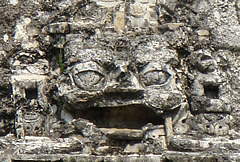
On the west side of the court is a gallery with stuccoed decoration on the piers and roof which fronts House C. This structure once had a roof comb, now only the lower portions remain.
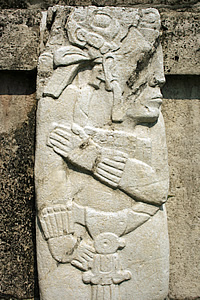
Rising from the court to the gallery is a hieroglyphic stairway.
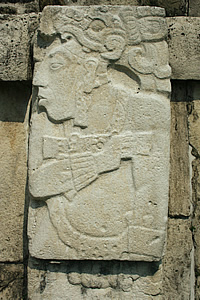
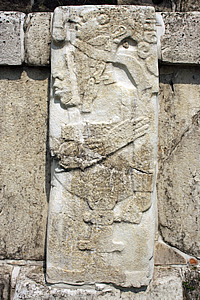
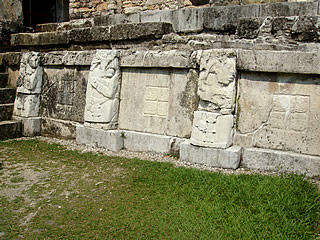
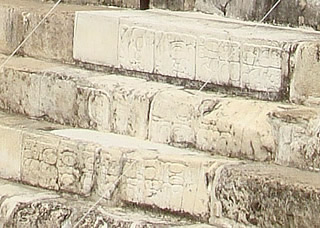


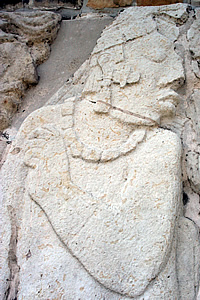
This court is the largest of the palace and therefore probably the most suitable for ceremonies. The wall carvings are principally of captives, demonstrating the might of the city. They are carved in poses of obeisance and respect.
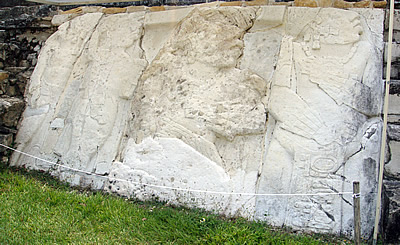
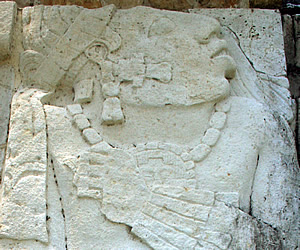
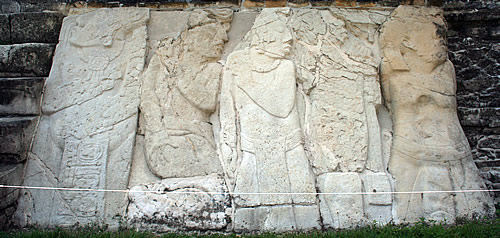
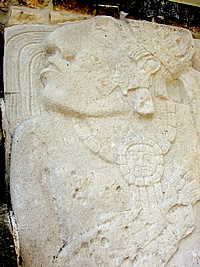
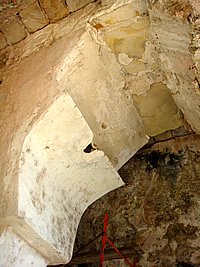
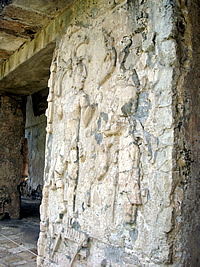
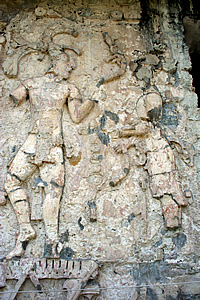
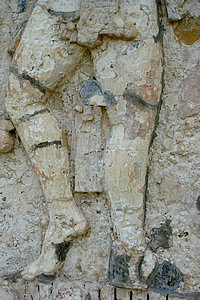

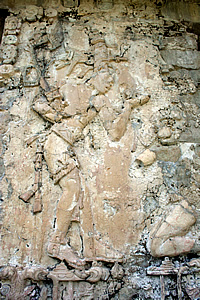
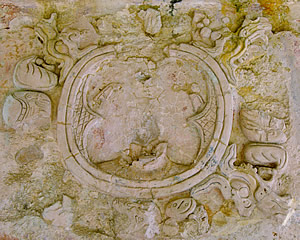
We left via House A where it was possible to see how the arched entrances between corbel-roofed corridors or long rooms were created. Parallel long rooms seem to be a feature here. These builders made use of strategic space within the roof vaults to lighten the weight whilst maintaining strength.

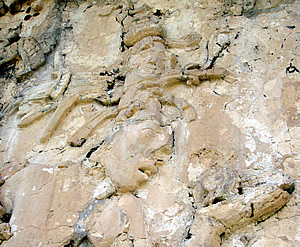
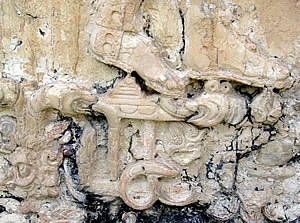
We walked along the north side of the palace where we saw the remains of a stucco feather headdress decoration with a lot of colour remaining. The palace must have been dazzlingly colourful, what a sight!
On the west side the stucco figures on the piers aren't in too bad condition.
On Pier D Lord Pakal, in the guise of First Father dances with a snake in his hand.8 Facing him a female in the clothing of First Mother grasps the end of the snake.
Remnants of colour can be seen. The colour coding was red for buildings and the human body, blue for anything divine or precious such as quetzal feathers, yellow for anything relating to the underworld.
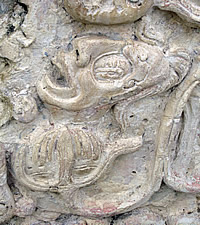
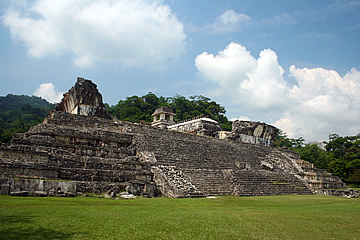
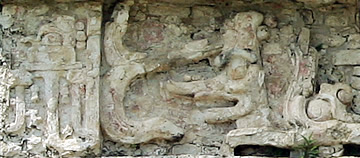
We headed around the northern side of the palace at the base of the platform. This side was the main entrance of the palace and so the most imposing. There are a number of stucco masks remaining.
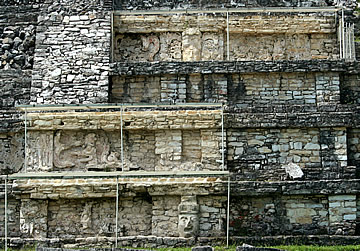
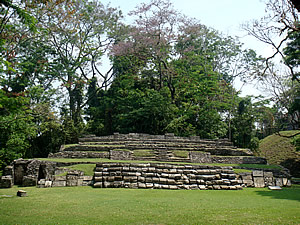
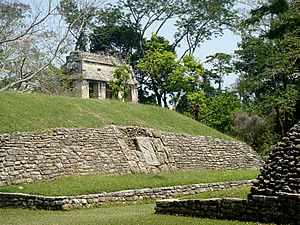
North of the palace lie the ruins of Temple X, very neat but with only very few fragments of primitive carving remaining.
Nearby the Temple of the Count was named for an archaeologist who lived there for a while and who claimed to be a count.
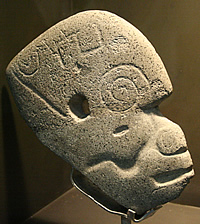
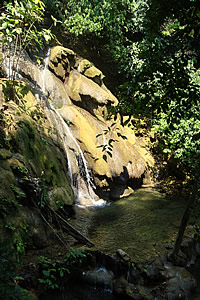
North east is a platform with the North Group of three temples and a couple of smaller structures. This group marks the extreme northern edge of the site and runs east to west.
We did not visit any of these temples, just passing by them as we looked at the ballcourt, which is quite small but of typical construction with a narrow playing area between two mounds.
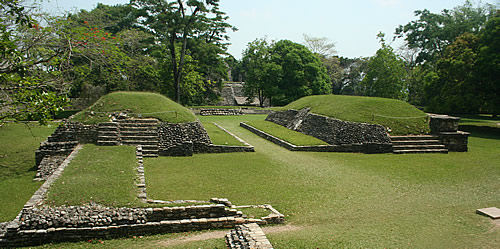

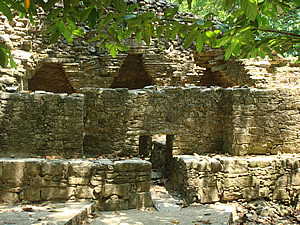
We made our way down through the jungle on a beautiful trail with the sun glinting through the canopy of leaves and the sound of rushing water. Even here there were masses of remains of buildings which have been designated Group C.1 They formed the residential buildings for the elite around AD 750-850.
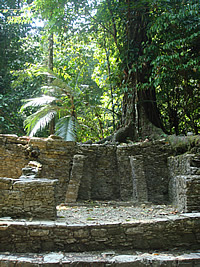

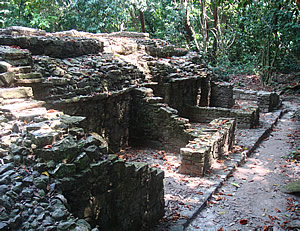
These ruins are fascinating precisely because they are not monumental structures but one of the few examples of buildings on a domestic scale that we saw. Inside the small buildings were very dark with nothing resembling a window. We saw many small houses, a sauna and a place where they found moulds for figures used in offerings. These were broken at significant periods, e.g. at the ending of a katun, and replaced with new ones.

The jungle setting was very atmospheric, an echo of how the site must have looked when first discovered.
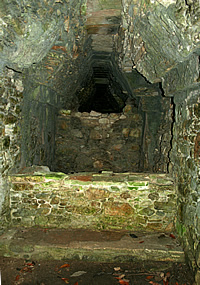
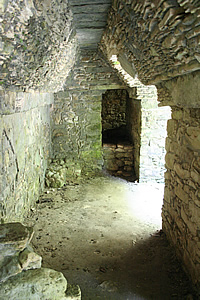
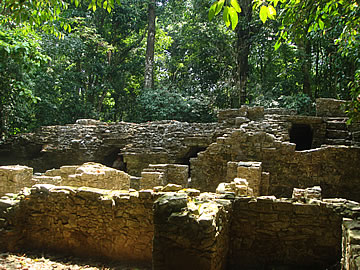
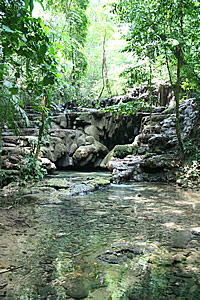

Finally we came to the so-called Queen's Baths, a beautiful setting but the water was rather low for the waterfall which would flow over the rocks.
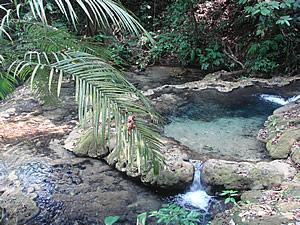
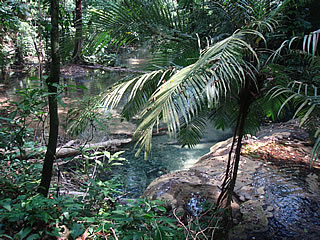
Well outside the rainy season there was still an abundance of water. The terrain here is not suitable for agriculture, though, and food must have been grown in outlying areas.
A final stop at the fascinating site museum and that was the end of our visit to Palenque, a beautiful site with fascinating structures and stories. Hidden in the jungle there is much more to be discovered.